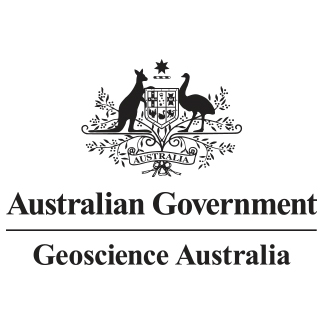Full description
As part of Geoscience Australia's Exploring for the Future program, the East Tennant region, which is centred on the Barkly Roadhouse in the Northern Territory, was identified as having favourable geological and geophysical indicators of mineral systems potential. Potentially prospective stratigraphy in the East Tennant region is completely concealed beneath Mesoproterozoic to Quaternary cover sequences. Prior to 2020 basement rocks in the East Tennant region were only known from a handful of legacy boreholes, supported by geophysical interpretation. In order to test geophysical interpretations and obtain additional samples of basement rocks for detailed analysis, a stratigraphic drilling campaign was undertaken in the East Tennant region as part of the MinEx CRC’s National Drilling Initiative. Ten stratigraphic boreholes were drilled through the cover sequences and into basement for a total of nearly 4000 m, including over 1500 m of diamond cored basement rocks to be used for scientific purposes.Inorganic geochemical samples from East Tennant National Drilling Initiative boreholes were taken to characterise cover and basement rocks intersected during drilling. Two sampling approaches were implemented based on the rocks intersected:
1) Borehole NDIBK04 contained localised sulphide mineralisation and elevated concentrations of several economically-significant elements in portable X-ray fluorescence data. In order to understand the geochemical variability and distribution of elements important for mineral system characterisation, the entire basement interval was sampled at nominal one metre intervals. This spacing was reduced to between 0.5 and 0.25 m from 237 m to 263 m to better understand a more intense zone of mineralisation, and
2) Samples from boreholes NDIBK01, NDIBK02, NDIBK03, NDIBK05, NDIBK06, NDIBK07, NDIBK08, NDIBK09 and NDIBK10 were selected to capture lithological and geochemical variability to establish bulk rock geochemical compositions for further interpretation. Attempts were made to sample representative, lithologically consistent intervals.
A total of 402 samples were selected for analysis. Sample preparation was completed at Geoscience Australia and Bureau Veritas, with all analyses performed by Bureau Veritas in Perth. All samples were submitted for X-ray fluorescence (XRF), laser ablation-inductively coupled plasma-mass spectrometry (LA-ICP-MS), FeO determination, and loss on ignition (LOI). Samples from borehole NDIBK04 also underwent total combustion C and S, and Pb collection fire assay by ICP-MS for determination of Au, Pt and Pd concentrations.
This data release presents inorganic geochemistry data acquired on rock samples from the ten East Tennant National Drilling Initiative boreholes.
Lineage
Maintenance and Update Frequency: asNeededNotes
PurposeInorganic geochemical samples from the East Tennant National Drilling Initiative boreholes were taken to characterise cover and basement rocks intersected during drilling. These data address fundamental geological objectives in the East Tenant region, including informing stratigraphic correlations with exposed basement rocks in the adjacent Warramunga and Murphy provinces, understanding tectonic and magmatic processes, identification of mineral system footprints, and determining representative ‘background’ values for East Tennant lithologies. Geochemical samples were also taken to compliment other analyses, such as U/Pb geochronology.
Created: 22 03 2022
Issued: 30 03 2022
Data time period: 2021-08-30 to 2022-03-01
text: westlimit=135.70; southlimit=-19.90; eastlimit=136.40; northlimit=-19.10
User Contributed Tags
Login to tag this record with meaningful keywords to make it easier to discover
Download Data (csv) [316 KB]
uri :
https://d28rz98at9flks.cloudfront.net/146418/146418_00_0.csv![]()
- DOI : 10.26186/146418

- Local : pid.geoscience.gov.au/dataset/ga/146418
- global : e549a272-81a5-45d1-a29f-587ce15e9571


